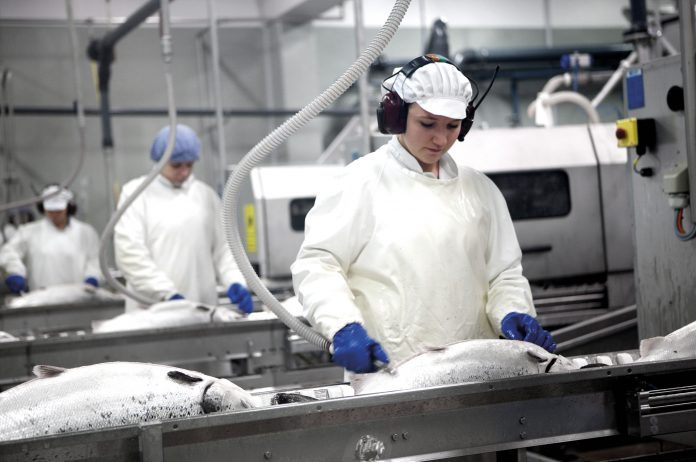
Whether escaping or as sources of pride and future capital, larger salmon seem inextricably linked to travel.
Some awfully big farmed salmon are being reported around the world, of late, and SalmonBusiness has started taking note.
Tuesday was a great day for sightings. There was Scottish salmon farmer, Loch Duart, revealing for all an 8.2-kilogram fish from one of its Uist grow-outs in the Outer Hebrides, northwestern Scotland, facing the chill North Atlantic.
It was described, unnecessarily perhaps, as “lice-free”, although past lice problems in Scotland are about to be addressed, as new rules due out this year from the Scottish Environmental Protection Agency will decide just how much space salmon will require to stay healthier and, perhaps, grow larger. Norway and Chile have begun addressing sea-lice and contagion primarily via new spacing regimes dependent, rightly or wrongly, on lice and wild-salmon counts.
Heavyweights
In British Columbia, Canada, two large salmon (one at 7.2 kg) were the only two escapees registered in 2016, and they experienced little time “on the outside” after exploiting a hole in a net pen and equipment failure during harvest and transfer. They were caught, weighed and confirmed to be from two farms: Marine Harvest’s Doyle Island and Cermaq’s Atrevida Point sites.
“All salmon-farmers can choose to produce big fish or small fish,” an industry insider said. “The market is biggest for three to six kilos which are preferred by (salmon) smokers in Europe. Big fish are often better paid, but the biological risk increases by the fish being longer in the water,” he said.
Larger fish bind a growers economic means in their capital-heavy grow-outs for a longer period of time. For growers furthest from markets, however, the “big fish” is king — Hence the Loch Duart tweet from the remotest Outer Hebrides of northwest Scotland.
Larger rival
The big fish is favoured in the Faroe Islands, too. Yesterday, we came upon a report on that fishery and its pride for growing salmon “a kilogram more” than “rival” Norwegian product often aimed at Norwegian market interests that reportedly don’t discuss much over six kilograms.
“The market for big fish is largely the fly-out market — the East and the USA — often in the form of fillets,” the source said.
With the Faroe Islands being halfway between Norway and Iceland in the North Atlantic, some Big Fish seem destined to fly.

